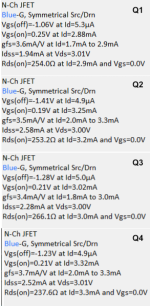Caldo71
Active member
Hey @PedalPCB as an early purchaser of the first batch of these PCBs, I’ll likely be starting my build before you get done with the official build docs. I already bought the components using the values on the PCB itself.
That being the case, I was wondering if you or some other forum wizard could jot down here the method for using the internal trim pots to bias the jfets with a multimeter? I’m a newb, but based on my experience with the Son of Ben, I’m assuming that’s what those are for?
Give it to me step by step like you were talking to an encephalitic meat chicken (with reading skills).
That being the case, I was wondering if you or some other forum wizard could jot down here the method for using the internal trim pots to bias the jfets with a multimeter? I’m a newb, but based on my experience with the Son of Ben, I’m assuming that’s what those are for?
Give it to me step by step like you were talking to an encephalitic meat chicken (with reading skills).


